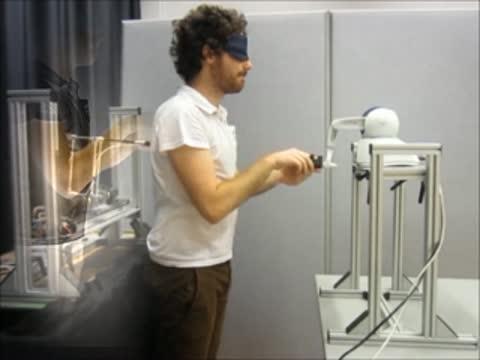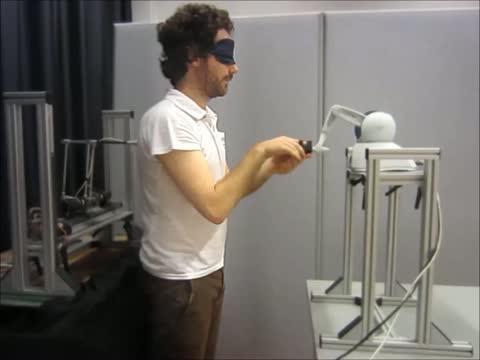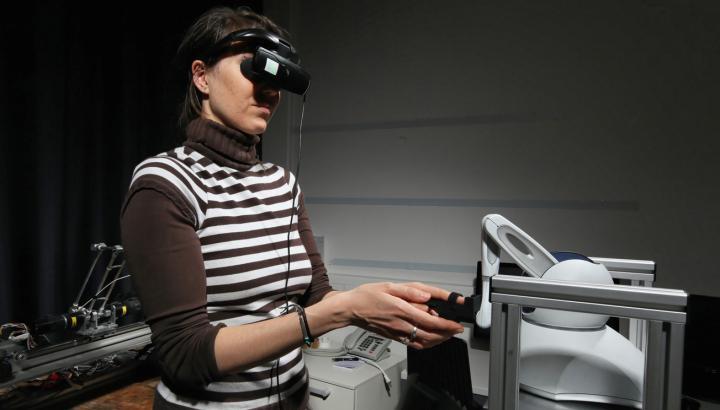The researchers explain what happened to those study participants as a result of the sensorimotor conflict this way: "This spatiotemporal conflict was resolved by our participants by generating the illusory experience that the felt touch was not caused by themselves, but by another person behind them who was touching their back."
The findings explain an experience that has influenced mystical thought, fiction, and humanity itself, but it may shed light on schizophrenic hallucinations, too.
"Collectively," the authors write, "the present neuroimaging and robotics data provide a solid scientific explanation for the FoP and link a phenomenon that appears at first sight as strange and complex to basic mechanisms of sensorimotor signal integration in a cortical network centering in frontoparietal cortex and a prominent account of positive symptoms in schizophrenia."

Participants experienced being in the presenceof another person in the asynchronous versus synchronous stimulation condition (p < 0.01) and experienced being touched by that invisible presence behind them (p < 0.01). Asynchronous stimulation induced a backward drift in selflocationtoward the position of the presence (p < 0.05;
(Photo Credit: Current Biology, Blanke et al.)

These movements were sent to the slave robot, which applied tactile stimuli in real time to the participants' backs. Participants moved the master robot for 3 min while they received tactile cues on their backs (by slave robot) and their right fingertips (by master robot). Stroking was applied either synchronously or asynchronously (500 ms delay), with or without somatosensory force feedback at the hand (2 3 2 factorial design).
(Photo Credit: Current Biology, Blanke et al.)

People don't really tend to see ghosts or guardian angels as much as "feel" them, and now researchers reporting in the Cell Press journal Current Biology on Nov. 6 think they know where that "feeling of a presence" (FoP) phenomenon comes from, based on studies of 12 patients with various neurological conditions. The researchers have also successfully devised a robot capable of giving otherwise healthy people the same feeling, simply by sending mixed-up sensorimotor signals to the brain.
(Photo Credit: Alain Herzog/EPFL)
Source: Cell Press